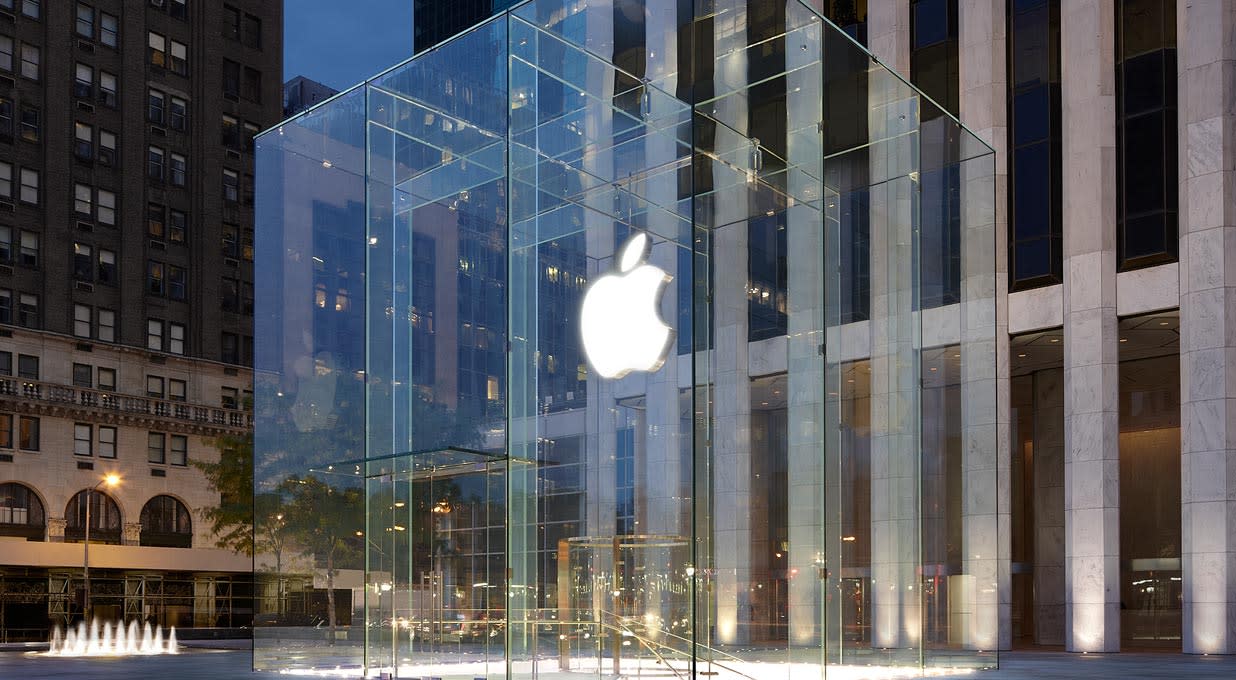Apple’s second-quarter net sales fell 4.3% to $90.8bn, less than the market had expected. The Service segment had a record quarter, up 14.2%, and Mac sales saw modest growth. This helped offset the expected declines in iPhone, iPad and Wearable revenues. All regions except Europe saw sales fall.
Operating profit fell 1.5% to $27.9bn, as costs were closely controlled and a larger proportion of sales came from the higher margin Services business.
Free cash flow improved from $55.9bn to $58.2bn, and it had a net debt of $37.4bn at the end of the quarter.
The board approved plans to buy back an additional $110bn of the company's stock. A dividend of $0.25 per share has been announced.
The shares rose 6.0% in after-hours trading.
Our view
Apple's second-quarter results surpassed the market's modest expectations, with more resilient demand than initially anticipated.
Upgrading your phone to the latest model tends to take a back seat when times are tough. That's why weak iPhone sales didn’t come as a surprise, but a positive forecast from CEO Tim Cook suggests it may be regaining its footing. His forecast for a return to growth in the current quarter and the announced buy back programme have helped boost investor sentiment.
A note of caution stems from competition in China after back-to-back quarters of revenue declines. Other big names like Huawei are directly challenging Apple and capturing a portion of local market revenue in the process. Some of these rivals boast larger installed product bases and more attractive prices.
But there was some good news out of China. Despite an overall decline in sales in the region, the flagship iPhone saw growth. And news that the iPhone 15 and iPhone 15 Pro Max were the best-selling smartphones in urban China suggests that Apple's allure remains intact.
We're also encouraged by progress in Services - things like the Appstore and Apple Music. This area of the business is higher margin because adding new users doesn't involve the same costs as building a MacBook or iPhone. But for Services to reach its full potential, it relies on growing hardware sales occurring in the first place.
To that end, we'd like to see some of Apple's other hardware pick up the pace. The company has struggled to captivate consumers with its Vision Pro headset and recently decided to end its lengthy endeavour to develop a self-driving car. However, there are hopes that integrating AI technology will reignite enthusiasm and excitement for Apple products.
While there are some extra risks to be considered, Apple's biggest asset remains its brand. The sheer scale of Apple's sales is testament to the grip that the shiny embossed piece of fruit has on global consumers. The loyal customer base means that there's an element of revenue visibility other businesses simply don't have.
Overall, we think Apple remains strong, but future spoils still rely on growing higher-margin areas of the Service business, while creating another generation of coveted products. We remain confident in Apple’s ability to perform, but it will need to consistently deliver in Asia if it’s to reassure investors it can cope with increased competition.
Environmental, social and governance (ESG) risk
The technology sector is generally low-risk in terms of ESG, but some segments like Electronic Components can be more exposed to environmental risks. Regulatory interest in the sector has picked up recently, leading to more acute business ethics risks. Other key risks include labour relations, data privacy and product governance.
According to Sustainalytics, Apple's overall ESG management is strong. Apple's huge scale means its primary ESG risk relates to business ethics. The group's market dominance exposes it to growing regulatory risks. Apple has strong management of Governance risks, including board structure and shareholder rights.
Apple key facts
All ratios are sourced from Refinitiv, based on previous day’s closing values. Please remember yields are variable and not a reliable indicator of future income. Keep in mind key figures shouldn’t be looked at on their own – it’s important to understand the big picture.
This article is not advice or a recommendation to buy, sell or hold any investment.No view is given on the present or future value or price of any investment, and investors should form their own view on any proposed investment.This article has not been prepared in accordance with legal requirements designed to promote the independence of investment research and is considered a marketing communication.Non - independent research is not subject to FCA rules prohibiting dealing ahead of research, however HL has put controls in place(including dealing restrictions, physical and information barriers) to manage potential conflicts of interest presented by such dealing.Please see our full non - independent research disclosure for more information.


